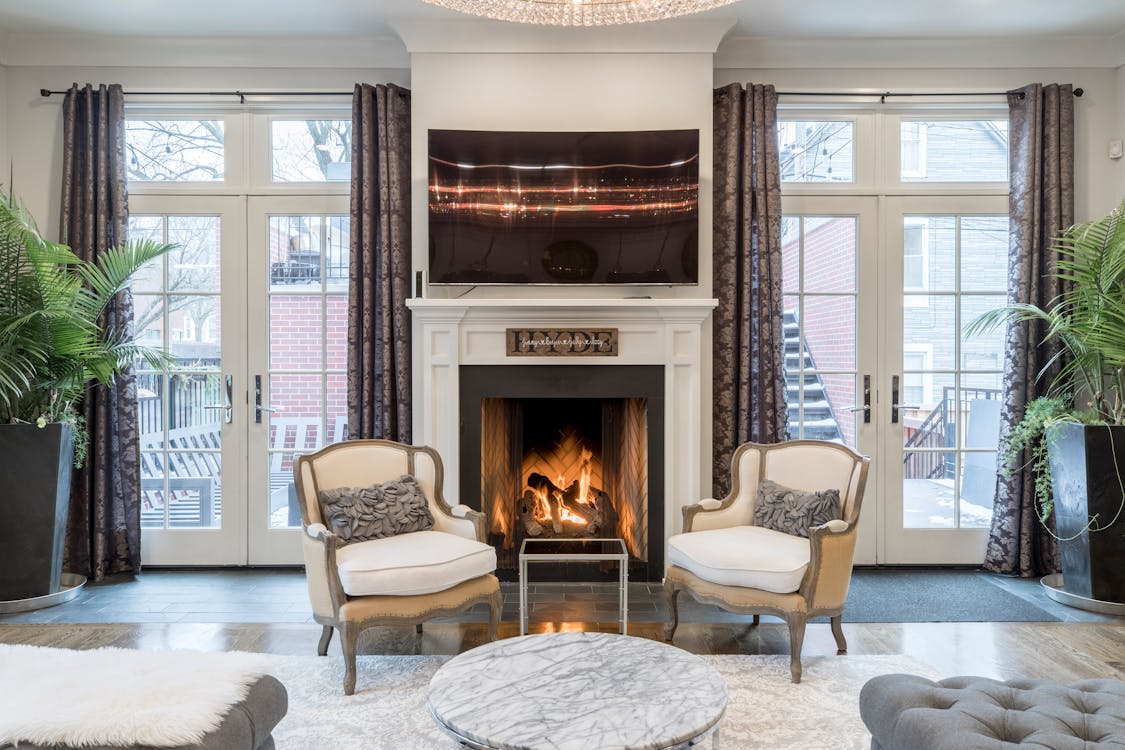
- Enhancing quality of life involves upgrading living spaces, kitchens, bedrooms, bathrooms, and outdoor areas for comfort and functionality.
- Incorporating smart technology, such as automated lighting systems and voice-controlled assistants, creates a seamless living experience.
- Energy-efficient practices like proper insulation and appliances help reduce utility bills and carbon footprints.
- Renewable resources, including solar panels and rainwater harvesting systems, support sustainability and reduce reliance on conventional energy sources.
- Small home improvements significantly impact comfort and efficiency and promote a more satisfying, sustainable lifestyle at home.
Introduction
Home is where the heart is—an adage that resonates strongly, especially in these modern times when our living spaces have become more than just shelters. They are our havens, our workplaces, and the backdrop for most of our life’s moments. Therefore, making strategic home improvements goes beyond aesthetics; it directly impacts our overall well-being and quality of life. This blog post will explore how targeted home enhancements can create a more comfortable, functional, and fulfilling living environment.
Understanding Quality of Life
What Constitutes Quality of Life?
Quality of life is a broad term encompassing various aspects, including physical health, emotional well-being, social connections, and personal fulfilment. At its core, it involves feeling comfortable, happy, and at peace within one’s environment. A well-maintained and thoughtfully designed home can significantly contribute to these feelings, making it easier to navigate daily tasks and enjoy leisure time.
The Connection Between Living Environment and Life Satisfaction
Research has consistently shown that our living environment is crucial to our overall life satisfaction. Every element influences our mood, productivity, and health, from the layout and functionality of spaces to the quality of air and lighting. By focusing on specific areas within the home, homeowners can create inviting spaces that enhance their quality of life.
Key Areas for Home Improvement
Living Spaces
Optimizing for Comfort and Functionality
Living spaces are the heart of any home, where family members gather to relax, entertain guests, and engage in various activities. Optimizing these areas for comfort and functionality can dramatically improve the quality of life.
Tips for Decluttering
- Decluttering: A clutter-free environment reduces stress and creates a sense of order. Consider adopting minimalist principles or using storage solutions like shelves, cabinets, and multifunctional furniture to keep things organized.
- Organizing: Efficient organization systems, such as labelled bins and drawer dividers, can make finding items easier and maintain a tidy space.
Decorating for a Pleasant Environment
- Color Scheme: Choose calming colors like blues and greens to create a relaxing atmosphere.
- Lighting: To create different moods, utilize natural light as much as possible and incorporate various lighting options, like floor lamps and dimmable lights.
- Furniture Arrangement: Arrange furniture to encourage social interaction and accommodate various activities, ensuring the space is functional and inviting.
Kitchen and Dining Areas
Significance of a Well-Designed Kitchen and Dining Area
The kitchen and dining areas are often considered the heart of the home, where meals are prepared and shared. A well-designed kitchen can make cooking more enjoyable and efficient, while a welcoming dining space can enhance social interactions.
Incorporating a Water Purifying System
- Health Benefits: Clean water is essential for good health. A water purifying system ensures that the water used for drinking and cooking is free from contaminants.
- Convenience: Modern water purifiers are easy to install and maintain, providing instant access to clean water without bottled alternatives.
Bedrooms and Rest Spaces
Creating Restful and Relaxing Bedrooms
The bedroom is a personal sanctuary, a place for rest and rejuvenation. Enhancing this space can lead to better sleep and overall well-being.
Choosing the Right Bedding
- Mattress and Pillows: Invest in a high-quality mattress and pillows that support your body and suit your sleep preferences.
- Bedding Materials: Opt for breathable, natural fabrics like cotton or linen to regulate temperature and improve comfort.
Lighting and Noise Reduction Techniques
- Lighting: Use blackout curtains to block external light and ensure a dark, sleep-friendly environment.
- Noise Reduction: To minimize noise disturbances, consider soundproofing solutions like heavy curtains, rugs, and acoustic panels.
Bathrooms
Transforming Bathrooms into Spa-like Retreats
Bathrooms are more than functional spaces; they offer relaxation and self-care opportunities. Turning your bathroom into a spa-like retreat can enhance your daily routine.
Fixtures and Storage Solutions
- Fixtures: Upgrade to high-quality fixtures like a rainfall showerhead or a deep soaking tub for a luxurious experience.
- Storage: Maximize storage with built-in shelves, cabinets, and baskets to keep toiletries organized and accessible.
Lighting for Relaxation
- Ambient Lighting: Soft, ambient lighting creates a calming atmosphere. Consider using dimmable lights or incorporating LED strips under cabinets.
- Task Lighting: Ensure adequate lighting around mirrors and sinks for grooming activities.
Outdoor Spaces
Utilizing Outdoor Areas for Leisure and Entertainment
Outdoor spaces offer a natural extension of your living area, providing opportunities for relaxation, socializing, and enjoying nature.
Landscaping and Gardening
- Landscaping: Invest in professional landscaping to create a cohesive and visually appealing outdoor space. Include features like pathways, flower beds, and water features.
- Gardening: Start a garden to grow vegetables, herbs, and flowers. Gardening can be a therapeutic activity that provides fresh produce for your kitchen.

Creating Patio or Deck Spaces
- Patio/Deck: Design a patio or deck with comfortable seating, dining areas, and possibly a fire pit for year-round enjoyment.
- Outdoor Lighting: To create a warm and inviting evening ambience, use outdoor lighting. String lights, lanterns, and solar-powered lights are excellent options.
The Role of Technology
Smart Home Technology
Integrating smart home technology can significantly enhance your home’s convenience, security, and efficiency.
Examples of Technological Advancements
- Home Security: Smart security systems, including cameras, alarms, and doorbell cameras, provide real-time monitoring and alerts to keep your home safe.
- Automation: Smart home devices like thermostats, lighting systems, and voice-controlled assistants (e.g., Amazon Echo, Google Home) can automate daily tasks and create a more seamless living experience.

Energy Efficiency and Sustainability
Making Homes More Energy-Efficient and Environmentally Friendly
Incorporating energy-efficient and sustainable practices into your home can reduce your carbon footprint and lower utility bills.
Tips for Reducing Energy Consumption
- Insulation: Properly insulate your home to maintain temperature and reduce the need for heating and cooling.
- Energy-Efficient Appliances: Invest in energy-efficient appliances that consume less power and water.
Utilizing Renewable Resources
- Solar Panels: Install solar panels to harness renewable energy and reduce reliance on traditional power sources.
- Rainwater Harvesting: Implement rainwater harvesting systems to collect and reuse water for gardening and other non-potable uses.
Conclusion
Enhancing the quality of life through home improvements is a worthwhile investment. Homeowners can create environments that promote comfort, functionality, and well-being by focusing on key areas like living spaces, kitchens, bedrooms, bathrooms, and outdoor areas. Additionally, incorporating smart technology and sustainable practices can enhance these benefits, making your home a haven of relaxation and efficiency. Remember, small changes can have a significant impact, leading to a better, more satisfying life at home.